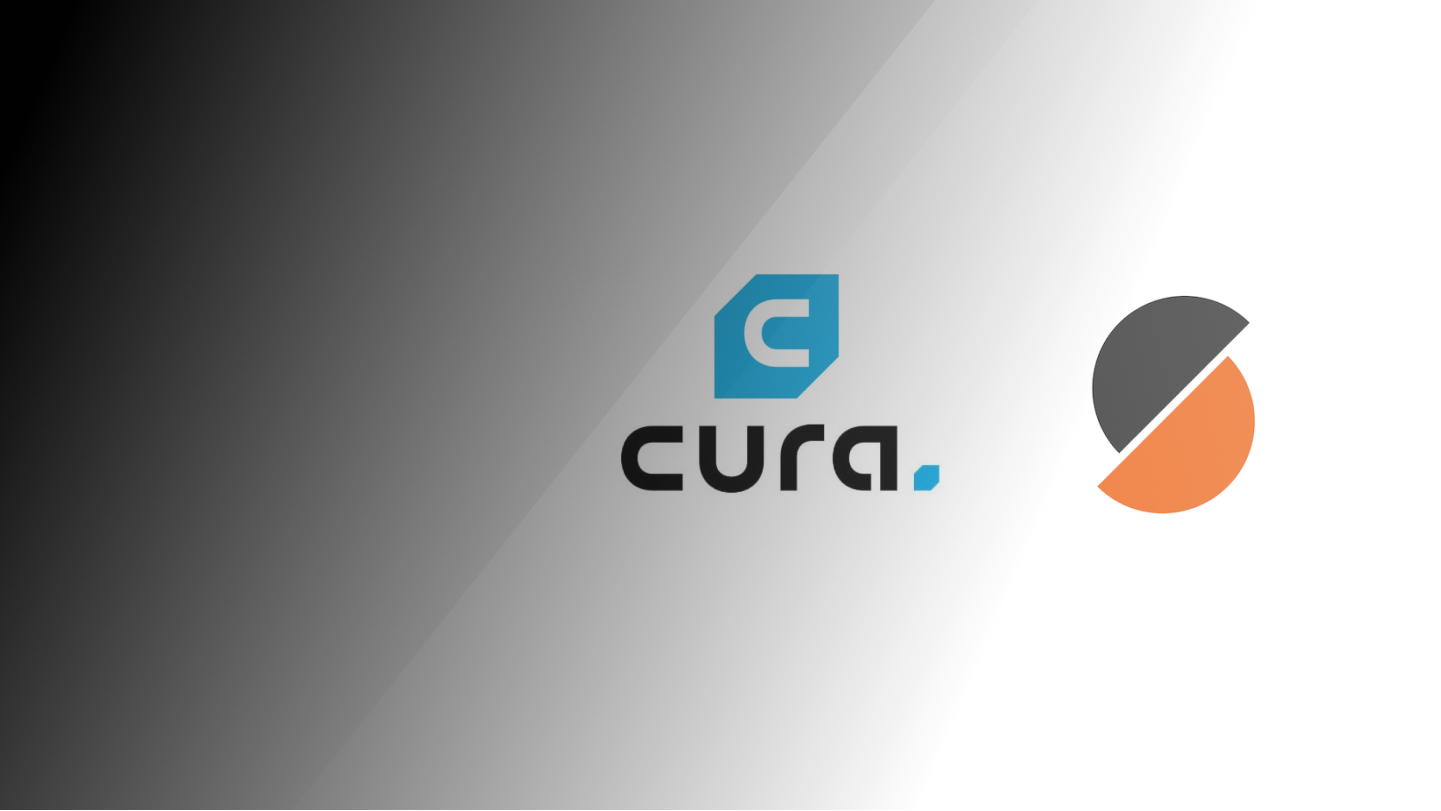3D printer slicing software is a program that converts 3D models into instructions that a 3D printer can understand. This software is essential for 3D printing, as it allows you to control the print settings, such as the layer height, infill density, and print speed. It also allows you to add support structures to your models, which can help to prevent them from failing during printing.
There are many different 3D printer slicing software programs available, both free and commercial. Some of the most popular programs include Cura, Slic3r, and Simplify3D. Each program has its own strengths and weaknesses, so it is important to choose one that is right for you and your printer.
In this article, we will compare two of the most popular 3D printer slicing software programs: Cura and PrusaSlicer. We will discuss the features of each program, as well as their pros and cons. We will also provide some tips on how to choose the right program for your needs.
Slicers are an essential part of the 3D printing process. Without a slicer, it would be impossible to print 3D models. Slicers allow you to control the print settings, such as the layer height, infill density, and print speed. They also allow you to add support structures to your models, which can help to prevent them from failing during printing.
There are many different 3D printer slicers available, both free and commercial. Some of the most popular slicers include Cura, Slic3r, and Simplify3D. Each slicer has its own strengths and weaknesses, so it is important to choose one that is right for you and your printer.
cura slicer vs prusaslicer
Cura is a free and open-source slicer developed by Ultimaker. It’s one of the most popular slicers available, and for good reason. Cura is easy to use, even for beginners, and it offers a wide range of features and settings.
One of the things that makes Cura so popular is its user interface. The interface is clean and well-organized, and it’s easy to find the settings you need. Cura also has a number of helpful tutorials and guides available, so you can learn how to use it even if you’re new to 3D printing.
In terms of features, Cura offers a lot to choose from. You can adjust the print settings for everything from the layer height to the infill density. Cura also supports a variety of different 3D printer types, so you can be sure that it will work with your printer.
PrusaSlicer is another free and open-source slicer, developed by Prusa Research. Like Cura, PrusaSlicer is easy to use and offers a wide range of features.
One of the things that set PrusaSlicer apart is its support for Prusa printers. If you own a Prusa printer, PrusaSlicer is the perfect slicer for you. It offers a number of features that are specifically designed for Prusa printers, such as support for the PrusaMMU2S multi-material upgrade.
PrusaSlicer also offers a number of features that are not available in Cura. For example, PrusaSlicer has a built-in mesh repair tool that can fix common problems with 3D models. PrusaSlicer also has a built-in post-processing script editor, so you can customize the way your prints look after they’re finished.
So, which slicer is better? Cura or PrusaSlicer?
The truth is, both Cura and PrusaSlicer are excellent slicers. They both offer a wide range of features, and they’re both easy to use. Ultimately, the best slicer for you will depend on your individual needs and preferences.
If you’re new to 3D printing, I recommend starting with Cura. It’s easy to use and offers a wide range of features. Once you’ve gotten the hang of 3D printing, you can try out PrusaSlicer to see if you prefer its features.
Is PrusaSlicer better than Cura?
Both Cura and PrusaSlicer are excellent slicers, and the best one for you will depend on your individual needs and preferences. Cura is generally considered to be easier to use, while PrusaSlicer offers more features and customization options.
Here are some of the pros and cons of each slicer:
Cura
Pros:
- Easy to use
- Wide range of features
- Compatible with a variety of 3D printers
- Free and open-source
Cons:
- Less customization options than PrusaSlicer
- Some features may not be available for all 3D printers
PrusaSlicer
Pros:
- More customization options than Cura
- Supports a wider range of materials
- Includes a built-in mesh repair tool
- Developed by the Prusa Research team, who are experts in 3D printing
Cons:
- More difficult to use than Cura
- Some features may not be available for all 3D printers
Ultimately, the best slicer for you will depend on your individual needs and preferences. If you’re new to 3D printing, I recommend starting with Cura. It’s easy to use and offers a wide range of features. Once you’ve gotten the hang of 3D printing, you can try out PrusaSlicer to see if you prefer its features.
What software is better than Cura?
There are a number of different 3D slicers available, each with its own strengths and weaknesses. Some of the most popular alternatives to Cura include Slic3r, Simplify3D, and Repetier-Host.
It depends on what you’re looking for in a slicer. Cura is a great all-around slicer, but it’s not the only option out there. Here are a few other slicers that you might want to consider:
- PrusaSlicer is another popular slicer that offers a lot of features and customization options. It’s developed by the Prusa Research team, who are experts in 3D printing.
- Slic3r is a free and open-source slicer that’s been around for a long time. It’s a good option if you’re looking for a basic slicer without a lot of bells and whistles.
- Simplify3D is a commercial slicer that offers a lot of features and customization options. It’s a good option if you’re looking for a powerful slicer that can handle complex prints.
- Repetier-Host is a slicer and host software that gives you full control over your 3D printer. It’s a good option if you’re looking for a powerful and versatile solution.
Ultimately, the best slicer for you will depend on your individual needs and preferences. I recommend trying out a few different slicers to see which one you like best.
Can you use Cura slicer on a Prusa?
Yes, you can use Cura slicer on a Prusa. In fact, Cura is one of the most popular slicers used with Prusa printers. Cura offers a wide range of features and settings that can be used to optimize your prints for your Prusa printer.
Cura is a free and open-source slicer developed by Ultimaker. It’s one of the most popular slicers available, and for good reason. Cura is easy to use, even for beginners, and it offers a wide range of features and settings.
One of the things that makes Cura so popular is its user interface. The interface is clean and well-organized, and it’s easy to find the settings you need. Cura also has a number of helpful tutorials and guides available, so you can learn how to use it even if you’re new to 3D printing.
In terms of features, Cura offers a lot to choose from. You can adjust the print settings for everything from the layer height to the infill density. Cura also supports a variety of different 3D printer types, so you can be sure that it will work with your printer.
If you have a Prusa printer, you can download the Cura profile for your printer from the Prusa website. The profile will include settings that are optimized for your printer, so you can get the best possible prints.
Cura is a great slicer for Prusa printers. It’s easy to use, offers a wide range of features, and is supported by a large community of users. If you’re looking for a slicer for your Prusa printer, Cura is a great option.
What are the advantages of PrusaSlicer?
PrusaSlicer is a great slicer for Prusa printers. Here are some of its advantages:
- It is developed by the Prusa Research team, who are experts in 3D printing. This means that the slicer is constantly being updated with new features and improvements.
- PrusaSlicer offers a wide range of features and customization options. This means that you can fine-tune your prints to get the best possible results.
- PrusaSlicer is easy to use, even for beginners. The interface is clean and well-organized, and it’s easy to find the settings you need.
- PrusaSlicer is free and open-source. This means that you can use it without any restrictions, and you can also contribute to its development.
- PrusaSlicer is supported by a large community of users. This means that there are plenty of resources available if you need help using the slicer.
Overall, PrusaSlicer is a great choice for anyone who owns a Prusa printer. It is a powerful and versatile slicer that offers a wide range of features and customization options. It is also easy to use and supported by a large community of users.
What is the difference between Cura and PrusaSlicer?
Cura and PrusaSlicer are both popular slicers for 3D printing. They have a lot in common, but there are also some key differences between the two.
Cura is developed by Ultimaker, while PrusaSlicer is developed by Prusa Research. Cura is a free and open-source slicer, while PrusaSlicer is free to use but not open-source.
Cura is generally considered to be easier to use than PrusaSlicer. The interface is more user-friendly and the settings are easier to understand. PrusaSlicer is more powerful than Cura, with more features and customization options.
Cura is compatible with a wider range of 3D printers than PrusaSlicer. PrusaSlicer is designed specifically for Prusa printers, but it can also be used with other printers.
Cura is more actively developed than PrusaSlicer. Cura gets regular updates with new features and bug fixes. PrusaSlicer is updated less frequently, but the updates are usually more substantial.
Ultimately, the best slicer for you will depend on your individual needs and preferences. If you’re looking for an easy-to-use slicer with a wide range of compatibility, Cura is a good choice. If you’re looking for a powerful slicer with a lot of features, PrusaSlicer is a good choice.
Which slicer should I use?
If you’re new to 3D printing, I recommend starting with Cura. It’s easy to use and offers a wide range of features. Once you’ve gotten the hang of 3D printing, you can try out PrusaSlicer to see if you prefer its features.
Conclusion
Cura and PrusaSlicer are both excellent slicers, and the best one for you will depend on your individual needs and preferences. If you’re new to 3D







